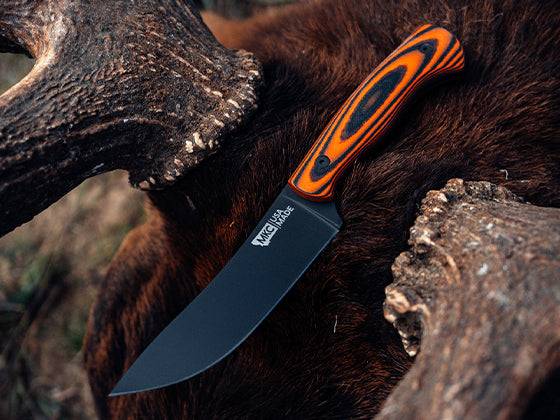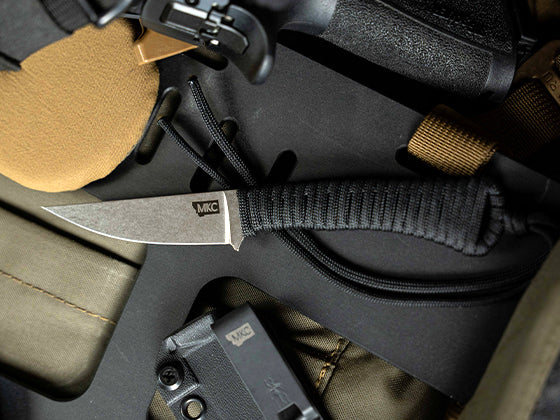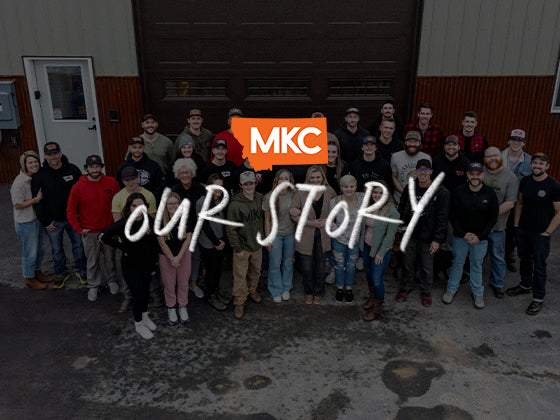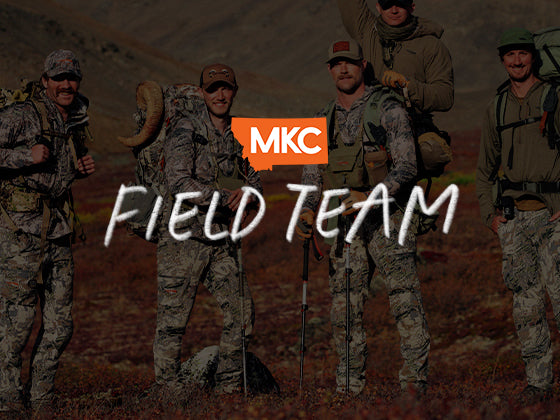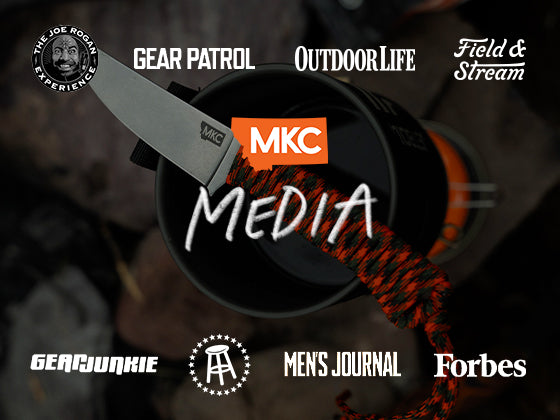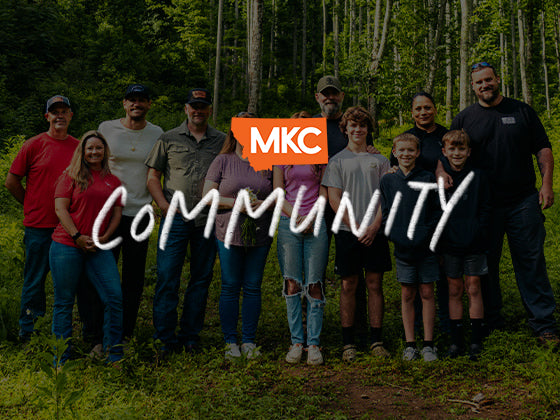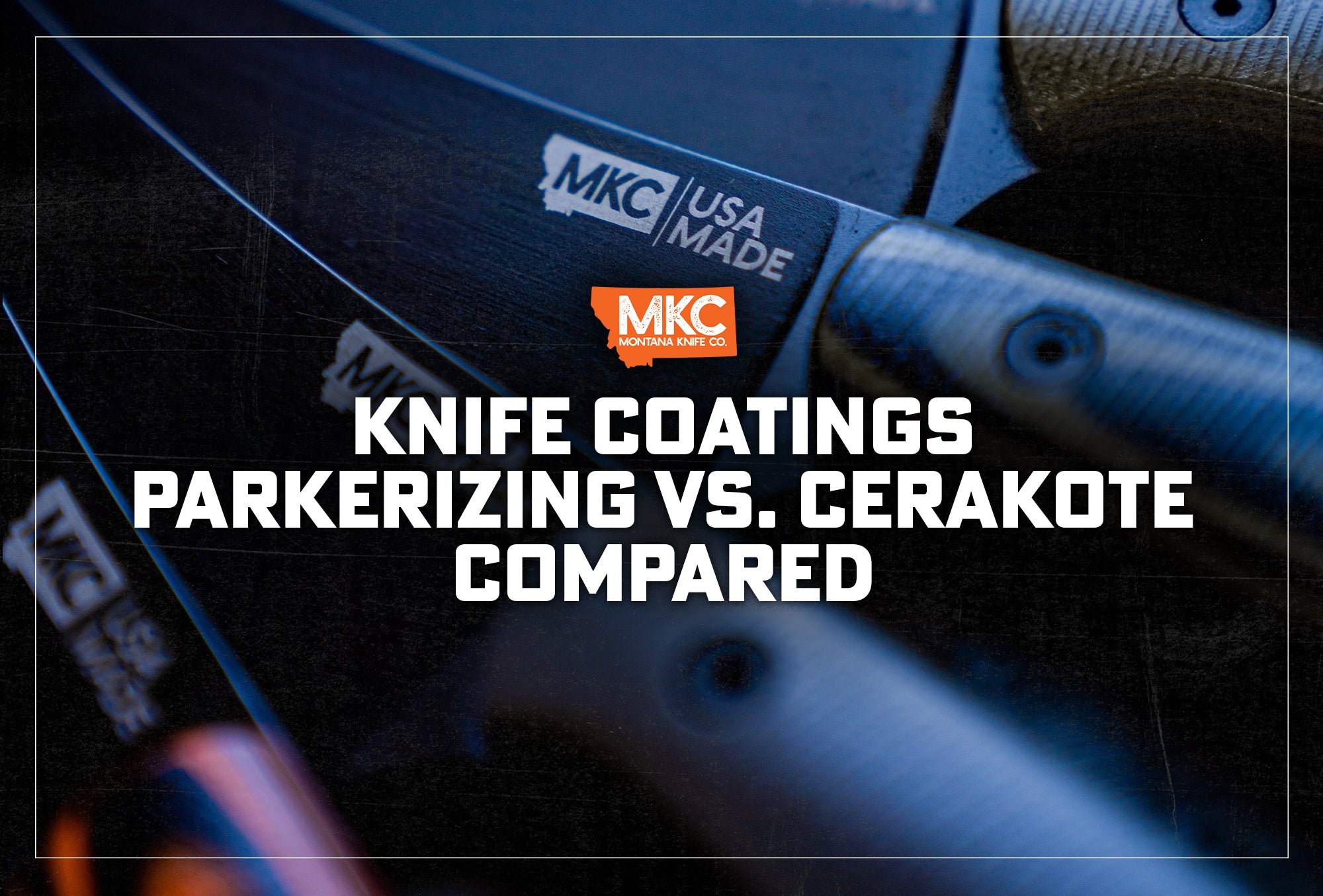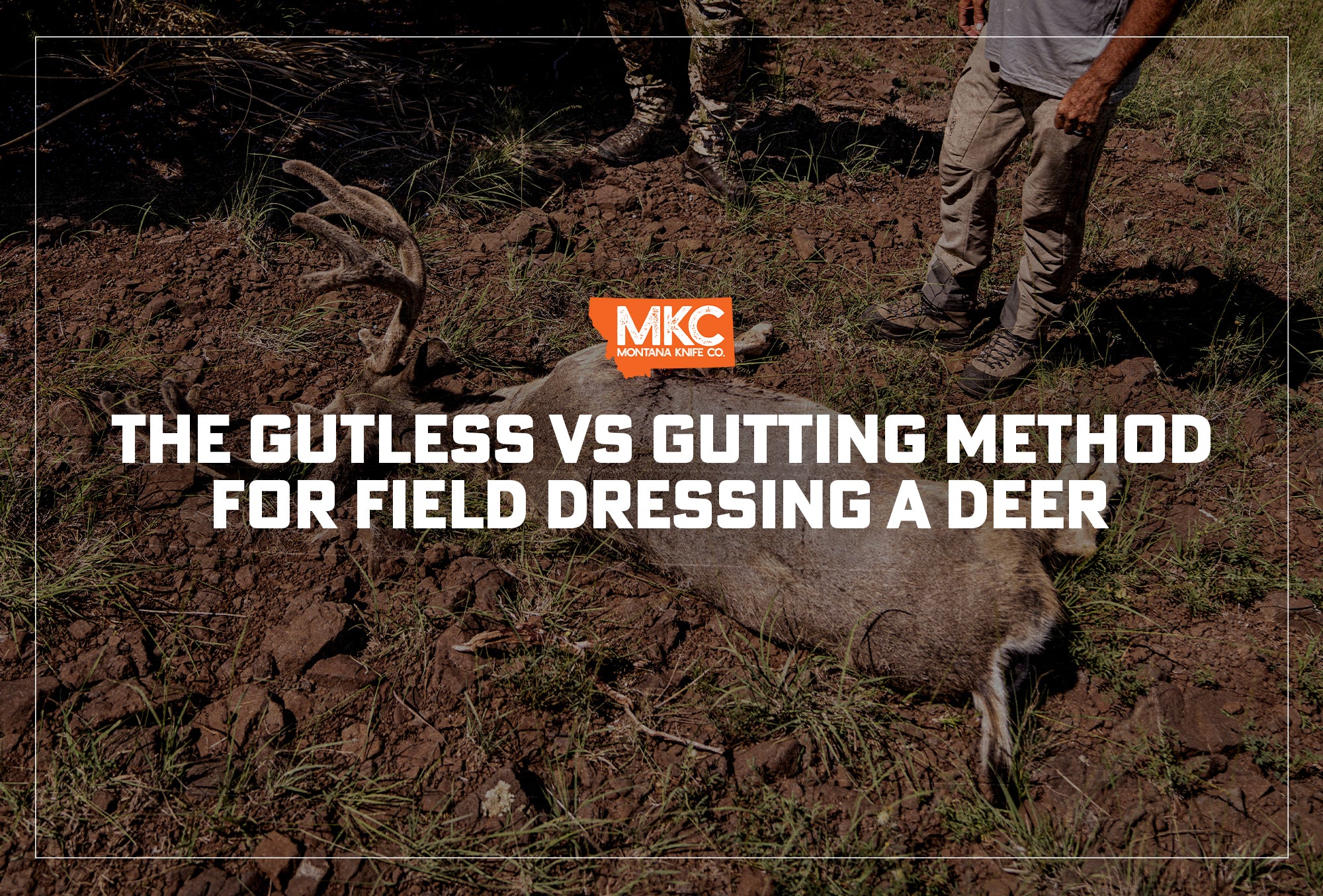Montana Knife Company is excited to introduce the Fieldcraft Survival Knife, a multipurpose, everyday carry knife.
When we set out to create this new blade, our goal was to make a true everyday carry knife; something not necessarily defined by tactical need, but that does a little bit of everything very well.
We wanted to create a knife that wasn’t too large or too small. It’s not so big that you might leave it behind, and it’s not so small that it lacks utility. You can attach it to your dress slacks and take it to a cocktail party, or attach it to your bathing suit, jump in a tube, and float down the river.
It’s meant for every purpose, every day, everywhere.
A Unique Knife That Builds on Tradition
When most people think “survival knife,” they envision a weapon a soldier might carry. But traditionally, military knives are 90% tool and only 10% weapon.
Why? Well, if you’re drawing a blade on the battlefield, you’re not in a good position. You’ve probably lost all your buddies and lost both your primary firearm and sidearm.
Alternatively, from a civilian perspective, it makes sense for a layperson to carry a blade. A blade is a great equalizer against a larger threat.
That’s why the Fieldcraft is 3.9" — it’s made for us civilians. Many areas ban blades over four inches in length. It wouldn’t be much of an everyday carry if it’s illegal to carry it. In fact, the Fieldcraft Survival Knife is so easy to carry, you may forget you have it on your person. But when you reach for it, it will always be there.
The Fieldcraft’s sheath was constructed with this high level of versatility in mind. Whether you’re wearing a belt or not, the sheath clips onto waistbands, backpack straps, or anything else you’re carrying.
I’ve been told that the Fieldcraft looks like a bushcraft or hunting knife. That’s because we took inspiration from a bird and trout knife, a knife you probably use the vast majority of the year when big game isn’t in season. When I teach survival classes, I always tell my students to focus on small animals that are available most of the year and to carry an appropriate knife.
The Fieldcraft is just that. It builds on this tradition with a slight drop point design and a slightly upswept spear point.
Groundbreaking Features and Specs

Steel
The MKC Fieldcraft is made with CPM 154, a very high quality, high carbon stainless steel.
Survival knives are typically made with either carbon or stainless steel because it makes them easier to hone in the field, and because of their corrosion resistance — they’re meant to be used in wet environments without rusting, whether it’s raining or you’re sweating.
Recently, I took the Fieldcraft on hike: 1,000-foot elevation over a mile and a half in the blazing heat. Needless to say, I was sweating like a pig all over the knife. But afterward, I didn’t notice a single bead of rust.
The Fieldcraft is finished in a stone wash, which has a matte look. It’s a contrast to the mirrored finish you see on a lot of tactical blades, or the sleek, black coating MKC does so well. I find stone wash to be a very practical blade finish that’s easy to maintain, one that won’t scratch or wear off like a coating. Remember, this knife is designed to be used.
When it comes to sharpening the Fieldcraft, I recommend a diamond stone for time efficiency.
Blade Thickness
Overly thick knives, which are a holdover of the 1990s, were once popular with people who wanted to use their tactical knives not just for cutting, but also as sharpened pry bars or chisels.
The problem is that the more you take away the purity of a knife as an actual knife, the poorer it performs as one.
Traditional knives used by sportsmen were thin. They recognized the utility in having the appropriate tool for each job. If they needed to chop, they would use an axe. If they needed to cut, they would use a light, thin knife.
Today, we’re able to use thinner steel. The blade tapers towards the tip, with a thickness of 5/32 of an inch.
Edge Geometry
The Fieldcraft Survival Knife is considered a flat-ground knife. It’s very different from what you might find in factory-produced knives that are marketed as survival knives. Those have a hollow grind that makes for a very weak edge.
The Fieldcraft has a full flat grind and a secondary bevel. This achieves symmetry, which results in a blade that’s stronger and easier to maintain in the field.
I believe in simple solutions. A flat grind with a standard V bevel is very easy to maintain. The average person will know how to pick it up and sharpen it, whether they choose to use a traditional sharpener, strop the knife frequently, or use a slack belt sharpener.
Even if they wind up convexing the edge, they’ll convert this flat-ground knife to a convex knife, which makes it even stronger. When it comes to maintenance on the Fieldcraft, it’s foolproof.
Handle Scales
The handle scales are G10, a fiberglass and resin laminate MKC is known for. It’s impervious to cold and heat and won’t shrink or swell like wood.
The handle scales are removable. They’re fastened with titanium screws, which will never rust. You can also remove them if you want to cord wrap the handle to make it even lighter.
The handle profile has an oval shape to give it more hand filament. Often when you have scales that are strictly flat, or when you have bare steel with a flat paracord wrapping, holding the knife is tricky — it has a tendency to twist when you hold it in a foil grip. We wanted the knife to be used in a strong hammer grip or a saber grip in defensive scenarios, or in a reverse grip where you can cap your thumb over the top without that blade twisting in your hand.
The handle was designed to be smooth, without texture. If you’re using a knife for an extended period of time, too much texture can create hotspots. G10 has only a slight texture — just enough to afford a purchase on the handle. It also has a slight guard to the blade, which will keep you from accidentally running your fingers on it.
Shape/Belly/Point
The blade has a bit of ricasso that’s unsharpened. It helps when bringing your middle finger closer to the self guard and when you’re using the tip of the blade for fine work.
There’s a decent straight section with no serrations. Personally, I’m not a fan of serrations — they’re difficult to sharpen in the field.
The slight drop point of the blade gives it a longer belly than a traditional spear point, making slicing a little easier.
The rounded butt keeps the Fieldcraft comfortable when tucked against your body. Nothing sharp will dig into your ribs, which means you can carry it 24/7, even in your pajamas. You could even put a paracord loop around it and wear it around your neck, since it weighs just seven ounces.
Sheath
Sheaths with discreet carry concept clips have become an industry standard. We use these clips on the Fieldcraft survival holster made by Tenicor.
This style of sheath has been adopted by many tactical knife manufacturers, but it works extremely well for hunting and fishing knives as well. We’ve also added a screw on the edge of the sheath to adjust the tension according to your needs.
A flatter, wider sheath, when clipped to your belt, stays locked in place and doesn’t rotate. You get a consistent drop point where you can train it to stay in place. You can also attach additional things to it, like a fire starter or other gear, while still riding somewhat flush.
Final Thoughts
Here at MKC, we know how to bring time-honored traditions to the modern hunter’s needs. If you’re looking for an everyday carry knife that you never have to remove from your person, no matter the circumstance, you’re exactly the person we designed the Fieldcraft Survival Knife for.
by Josh Smith, Master Bladesmith and Founder of Montana Knife Company
























